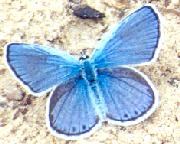
Biological diversity was a primary reason for the creation of Indiana Dunes National Park. Because the national park is located in several ecological transition zones, the diversity is many times greater than most areas its size. In fact, Indiana Dunes National Park is fourth in biological diversity among the national parks despite having only 15,000 acres. Remnant species from past climatic changes have managed to survive in sheltered habitats. The moderating effect of Lake Michigan, along with the great variety of habitats within a small area, explain much of the plant and animal diversity. 46 species of mammals, 18 species of amphibians, 23 species of reptiles, 71 species of fish, 60 species of butterflies, and 60 species of dragonflies and damselflies can be found here. The largest herbivore is the white-tailed deer while the largest predator is the coyote. Over 350 species of birds have been identified, with 113 of these being regular nesters. The national park also provides habitat for a great blue heron rookery and the federally endangered Karner blue butterfly. As a result of the diversity, visitors can hear several different species of frogs and toads calling during the spring and summer. People hiking through dunes and blowouts may catch a glimpse of the six-lined racerunner darting through the grass. |
Last updated: August 2, 2024
